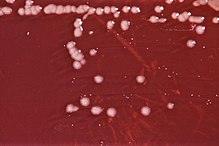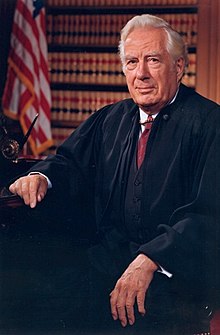As with all utility patents in the United States, a biological patent provides the patent holder with the right to exclude others from making, using, selling, or importing the claimed invention or discovery in biology for a limited period of time - for patents filed after 1998, 20 years from the filing date.

Monsanto Canada Inc v Schmeiser [2004] 1 S.C.R. 902, 2004 SCC 34 is a leading Supreme Court of Canada case on patent rights for biotechnology, between a Canadian canola farmer, Percy Schmeiser, and the agricultural biotechnology company Monsanto. The court heard the question of whether Schmeiser's intentionally growing genetically modified plants constituted "use" of Monsanto's patented genetically modified plant cells. By a 5-4 majority, the court ruled that it did. The Supreme Court also ruled 9-0 that Schmeiser did not have to pay Monsanto their technology use fee, damages or costs, as Schmeiser did not receive any benefit from the technology. The case drew worldwide attention and is widely misunderstood to concern what happens when farmers' fields are accidentally contaminated with patented seed. However, by the time the case went to trial, all claims of accidental contamination had been dropped; the court only considered the GM canola in Schmeiser's fields, which Schmeiser had intentionally concentrated and planted. Schmeiser did not put forward any defence of accidental contamination.

Giles Sutherland Rich was an associate judge of the United States Court of Customs and Patent Appeals (CCPA) and later on was a United States Circuit Judge of the United States Court of Appeals for the Federal Circuit (CAFC), and had enormous impact on patent law. He was the first patent attorney appointed to any federal court since Benjamin Robbins Curtis was appointed to the Supreme Court in 1851.
Central Hudson Gas & Electric Corp. v. Public Service Commission, 447 U.S. 557 (1980), was an important case decided by the United States Supreme Court that laid out a four-part test for determining when restrictions on commercial speech violated the First Amendment of the United States Constitution. Justice Powell wrote the opinion of the court. Central Hudson Gas & Electric Corp. had challenged a Public Service Commission regulation that prohibited promotional advertising by electric utilities. Justice Brennan, Justice Blackmun, and Justice Stevens wrote separate concurring opinions, and the latter two were both joined by Justice Brennan. Justice Rehnquist dissented.
LabCorp v. Metabolite, Inc., 548 U.S. 124 (2006), is the first case since Diamond v. Chakrabarty in which the U.S. Supreme Court indicated a renewed interest in examining the limits of patentable subject matter for advances in life sciences. Although the Court initially agreed to hear the case, it was later dismissed in 2006 with three Justices dissenting. The defendant's petition to the Supreme Court raised an issue not addressed in opinions from the lower courts: the claim at issue was directed to patent ineligible subject matter and therefore invalid.

Ananda Mohan Chakrabarty, PhD was an Indian American microbiologist, scientist, and researcher, most notable for his work in directed evolution and his role in developing a genetically engineered organism using plasmid transfer while working at GE, the patent for which led to landmark Supreme Court case, Diamond v. Chakrabarty.
In United States patent law, an article of manufacture is one of the four principal categories of things that may be patented. The other three are a process, a machine, and a composition of matter. In United States patent law, that same terminology has been in use since the first patent act in 1790.
In United States patent law, a composition of matter is one of the four principal categories of things that may be patented. The other three are a process, a machine, and an article of manufacture. In United States patent law, that same terminology has been in use since the first patent act in 1790.
The United States is the largest grower of commercial crops that have been genetically engineered in the world, but not without domestic and international opposition.
On 29 March 2010, the US District Court for the Southern District of New York found several of the patent claims on the BRCA1 and BRCA2 breast cancer genes held by Myriad Genetics to be invalid. The patents were initially issued on the basis that the genes were isolated and purified to a non-naturally occurring state, however the court found, amongst other things, that the purification was not markedly different from a product of nature and thus was not patentable. The ruling may have implications for holders of other gene patents and the patentability of other naturally occurring substances. It has the potential to directly affect the operation of the healthcare and medical research industries, particularly with regards to cancer treatment and prevention, and may alter the accessibility of such therapies to patients.
Chakrabarty is a surname. Notable people with the surname include:
Banner Witcoff, Ltd. is an American law firm that specializes in the practice of intellectual property law, including patent, trademark, copyright, trade secret, computer franchise and unfair competition law. The firm engages in the procurement, enforcement and litigation of intellectual property rights throughout the world, including all federal and state agencies, and the distribution of such rights through leasing and franchising. The firm has approximately 125 attorneys and agents in its Chicago, IL; Washington, DC; Boston, MA; and Portland, OR offices.
Mayo v. Prometheus, 566 U.S. 66 (2012), was a case decided by the Supreme Court of the United States that unanimously held that claims directed to a method of giving a drug to a patient, measuring metabolites of that drug, and with a known threshold for efficacy in mind, deciding whether to increase or decrease the dosage of the drug, were not patent-eligible subject matter.
A biological patent is a patent on an invention in the field of biology that by law allows the patent holder to exclude others from making, using, selling, or importing the protected invention for a limited period of time. The scope and reach of biological patents vary among jurisdictions, and may include biological technology and products, genetically modified organisms and genetic material. The applicability of patents to substances and processes wholly or partially natural in origin is a subject of debate.
The Plant Variety Protection Act of 1970 (PVPA), 7 U.S.C. §§ 2321-2582, is an intellectual property statute in the United States. The PVPA gives breeders up to 25 years of exclusive control over new, distinct, uniform, and stable sexually reproduced or tuber propagated plant varieties. A major expression of plant breeders' rights in the United States, the PVPA grants protection similar to that available through patents, but these legal schemes differ in critical respects. The PVPA should not be confused with plant patents, which are limited to asexually reproduced plants.
J. E. M. Ag Supply, Inc. v. Pioneer Hi-Bred International, Inc., 534 U.S. 124 (2001), was a decision of the United States Supreme Court holding for the first time that utility patents may be issued for crops and other flowering plants under 35 U.S.C. § 101. The Supreme Court rejected the argument that the exclusive ways to protect these plants are under the Plant Variety Protection Act (PVPA), 7 U.S.C. § 2321, and the Plant Patent Act of 1930 (PPA), 35 U.S.C. §§ 161-164.
Association for Molecular Pathology v. Myriad Genetics, Inc., 569 U.S. 576 (2013), was a Supreme Court case, which decided that "a naturally occurring DNA segment is a product of nature and not patent eligible merely because it has been isolated.” However, as a "bizarre conciliatory prize" the Court allowed patenting of complementary DNA, which contains exactly the same protein-coding base pair sequence as the natural DNA, albeit with introns removed.

In re Roslin Institute (Edinburgh), 750 F.3d 1333 (Fed. Cir. 2014), is a 2014 decision of the United States Court of Appeals for the Federal Circuit rejecting a patent for a cloned sheep known as "Dolly the Sheep"— the first mammal ever cloned from an adult somatic cell.

Patentable subject matter in the United States is governed by 35 U.S.C. 101. The current patentable subject matter practice in the U.S. is very different from the corresponding practices by WIPO/Patent Cooperation Treaty and by the European Patent Office, and it is considered to be broader in general.









